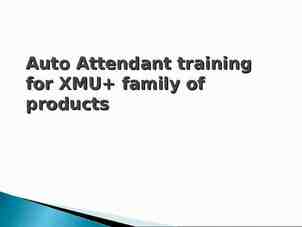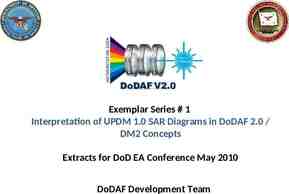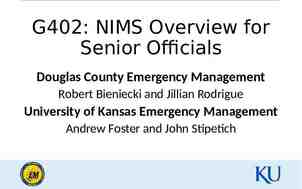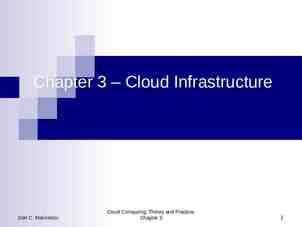Centralized vs Decentralized Need-based Programs NASSGAP Spring
29 Slides798.00 KB
Centralized vs Decentralized Need-based Programs NASSGAP Spring Conference 2006 A view from: Rhode Island Florida Minnesota
RHODE ISLAND HIGHER EDUCATION ASSISTANCE AUTHORITY Assisting Rhode Island’s Students . .Investing in Rhode Island’s Future
RI State Grant Program Need-Based 300 - 1400 award range Fully Portable Gift Aid Undergraduate Full-time Study and Part-time study
RI State Grant Awarding Formula Tuition and Fees (Capped at URI T&F for out-of-state schools) Standard Living Allowance ( 5000 dep./ 6000 ind.) Cost of Education - Expected Family Contribution - Estimated Pell Grant Financial Need (Must be at least 1,000) x 30% Award ( 300 - 1400 range)
RI State Grant 2004-05 Expenditure - 13,820,274 75% Instate - 10,390,953 25% Out of State - 3,429,321 Students Awarded – 12,802 76% Instate – 9,766 24% Out of State – 3,036
RI State Grant Awarding Process RIHEAA Receives ISIR Award is Calculated for Each School Listed on FAFSA Student is Notified via Paper or Email Student can Accept/Decline Award (Indicate School Choice) Award is not Cancelled if No Student Response
RI State Grant Verification Process School Verifies Enrollment Each Term Verification Completed Electronically via Secure Web Site Can complete verification process up to 60 days prior to beginning of term
RI State Grant Verification Process School Verifies: – EFC – Dependency Status – Enrollment - Full / Part / Part Time / Not Enrolled – Financial Need - Full Need / Partial Need / No Need – Satisfactory Progress – Ineligible due to: Bachelor’s Degree; Drug Conviction; etc.
RI State Grant Payment Process School Requests Payment Electronically Each Term Can Request Payment One Day after Start of Term Payment Request is Processed by RIHEAA and Sent to State Office of Accounts and Control Office of Accounts and Control Processes and Sends Request to State Treasurer’s Office State Treasurer’s Office Mails Check to School
Benefits of a Centralized System Program Remains “Student-Centered” – Less Likely to Have Public/Private – Instate/Outof-State Debate Centralized System Supports Portability – New Schools Added Each Year (542 schools paid in 2004-05) Accountability – Day to Day vs. Term/Year-End Accountability Research – Able to Gather/Provide Statistical Info from Own Records
Contact Mary Ann Welch Director of Program Administration Rhode Island Higher Education Assistance Authority 560 Jefferson Blvd. Warwick RI 02886 (401) 736-1171 [email protected]
Florida Department of Education Office of Student Financial Assistance Decentralized Programs Theresa Antworth – Director State Scholarship and Grant Programs
History In 1972, Florida need-based aid began with – 312 students – 320,219 – Average award of 1,026 Twice the cost of tuition at a public four year institution In 1989-90, three programs evolved to split the funds between the participating sectors Florida public student assistance grant Florida private student assistance grant Florida postsecondary student assistance grant
Florida Student Assistance Grant (FSAG) Effective 1999-00 - Legislation changed centralized administrative responsibilities to a decentralized administration Institutions continued to want more control of the funds for their students – Decentralization allowed for Flexible application deadlines Varying award amounts dependent upon individual student need and other packaged aid Determination of eligibility at the institution level
Centralized to Decentralized State Maintains Annual appropriations – Maximum award amounts as in proviso Student – – – – – – eligibility requirements Must file the FAFSA US citizen Florida resident Undergraduate (first baccalaureate) Degree-seeking No default or non-repayment status allowed
Centralized to Decentralized State Maintains Annual allocations to participating institutions based on formula – Gives priority to prior year’s disbursement of funds, – Includes number of eligible applicants who did not receive awards (Otherwise Eligible), – Provides for re-allocation of unused funds Annual qualifying EFC – Adjusts to increases in the Pell qualifying EFC
Centralized to Decentralized Participating Institutions Oversee Application process Determination of initial and renewing student eligibility Determination of award amounts up to state maximum Notification to students of award status Submit required student data to the state Annual reconciliation of funds
Program Participation in 1999-00 Program Expenditures Disbursed Students Average Award Public 30,956,659 36,549 847 Private 8,367,975 9,188 911 Postsecondary 4,742,219 6,674 711 Total 44,068,853 52,411 840
2005-06 Preliminary FSAG Participation and Average Award Expenditures Disbursed Students Average Award Otherwise Eligible 99,772,777 99,749 1,000 25,799
FSAG Funding Sources Multiple funding sources have emerged from need to increase funding levels What was once general revenue and LEAP are now: – Florida general revenue – Federal leveraging educational assistance partnership (LEAP) program and SLEAP – Florida lottery – Florida guaranty agency loan operating trust fund
2005-06 & 2006-07 Appropriations – Policy Issue 140,000,000 120,000,000 120,510,278 100,000,000 80,000,000 98,857,982 60,000,000 40,000,000 20,000,000 0 Appropriation 2005-06 2006-07
Decentralized Advantages and Disadvantages Advantages Annual Budget derived from disbursed and otherwise eligible Flexible application deadlines Institutions determine eligibility based on individual student needs Maximize expenditure of all funds Disadvantages Student program turned institutional program Timely and accurate data from institutions Late reallocation timeframe to redistribute unused funds
Final Note State publicized program (online & brochures) – www.FloridaStudentFinancialAid.org State coordinates with institutions Count of ALL eligible students aids in the budget process
Minnesota State Grant Program Delivery Systems “A Little of Both” Cheryl Maplethorpe Director of Financial Aid Division
Centralized Delivery System Minnesota office of higher education (the agency) receives student's FAFSA data from federal processor for all applicants listing Minnesota as state of legal residence ! The agency sends roster to schools showing which FAFSA records are on file for each school if school is first school listed on FAFSA ! Schools screen for eligibility and inform the agency on roster which eligible students are enrolled ! The agency calculates awards and notifies students ! The agency disburses student checks to schools ! Schools send refunds to the agency ! Communication is between student, the agency and school
Decentralized Delivery System Schools receive student's FAFSA data from federal processor ! Schools screen applications for eligibility ! Schools calculate awards and notify students ! Schools report DDS records to Office of Higher Education each month containing FAFSA, award and payment data ! The Agency edits for certain eligibility criteria and checks schools' awards/payments for accuracy ! The Agency disburses lump sum funds advances to schools to cover awards in batch ! Schools disburse funds to students ! Communication is between student and school All 132 participating schools are now on the Decentralized Delivery System for the Minnesota State Grant Program.
State Grant Centralized Delivery System
State Grant Decentralized Delivery System
Centralized vs Decentralized Student Centered Optimize Funding Accountability Budget Initiatives


































